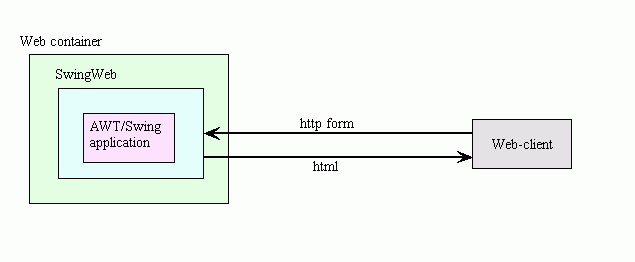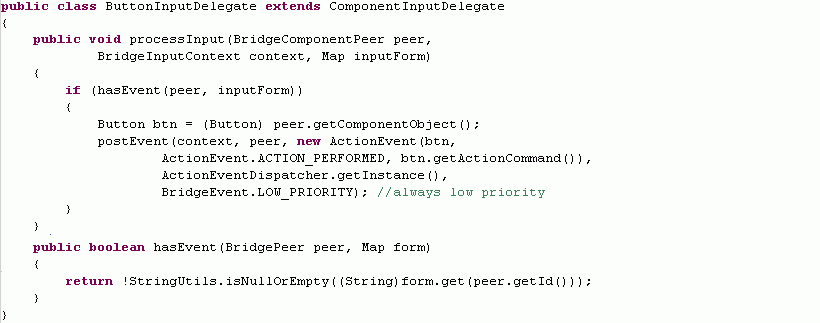
Before we get into the details of swingweb application development, it is better for the developer to have a basic
understanding of how swingweb framework works.

For rendering, the RenderDelegates will render the component using jxp templates. A jxp template is essentially
a template file that contains some html text and some java code similar to jsp. For example, the jxp template of a button looks like
this:

Nothing fancy here. It's just a html presentation of the java.awt.Button component. If you look close enough, you
will notice that the name of the button is the expression "_com.getId()" will would be the id of the ButtonPeer.
That way when the form is clicked, the corresponding ButtonInputDelegate that handles event input of the component
could detect that the specific button has been clicked.
As for the input, the InputDelegate of the components looks for the information inside a map object (created from servlet request)
to change the state of the components (e.g. set the text of a TextComponent to changed text) and/or fire events (e.g. button
click event). For example, the ButtonInputDelegate that handles the awt button input has the following implementation:

The ButtonInputDelegate uses the id from the component peer to check whether the button is clicked, and posts
an event to the AWT event queue. The AWT EventQueue will then handle the rest of the processing including
firing the events to all the listeners of the button.
This is a simplistic overview of what Swingweb does without going into much detail of what's underneath the framework.
Swingweb provides the RenderDelegate/InputDelegate implementation for most of the major components so if an application
only uses these components, the application should work inside Swingweb. Otherwise, you need to implement
your own RenderDelegate/InputDelegate, which is not hard to do and it only need to be done once for each type of component.
This will be discussed in greater detail in section 2.2.